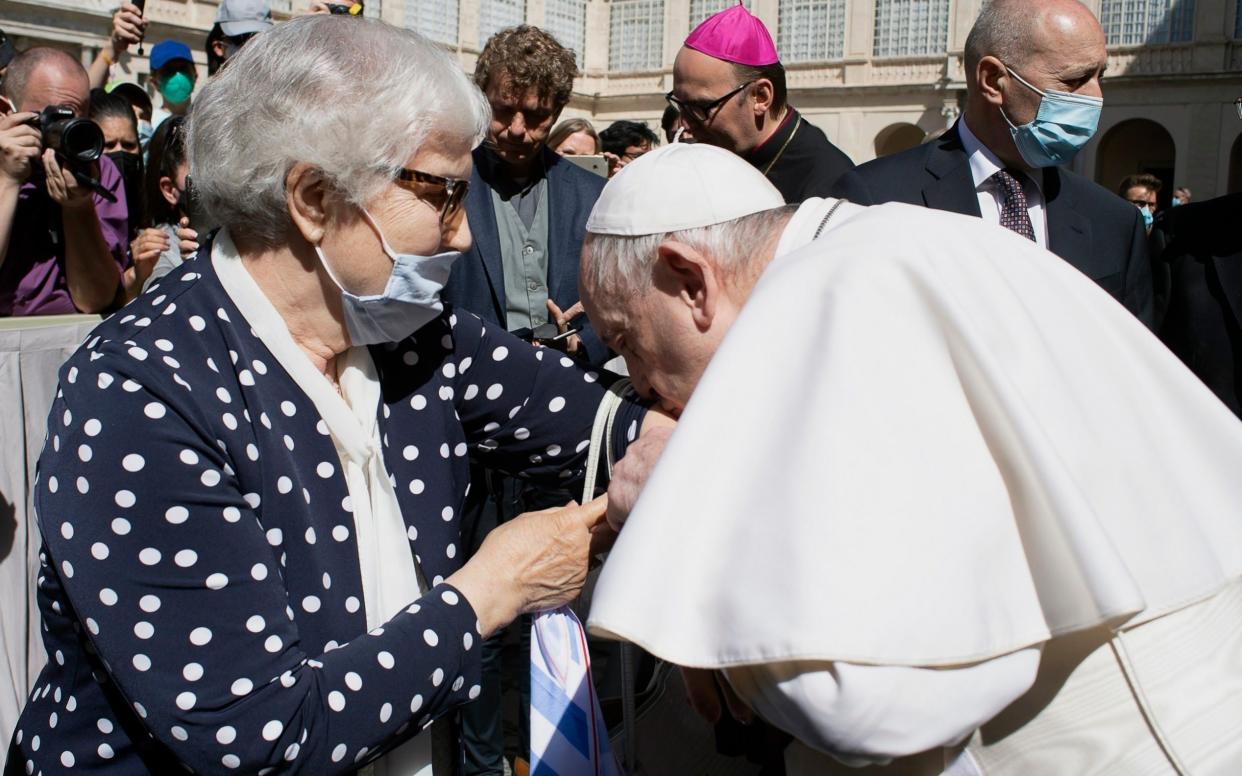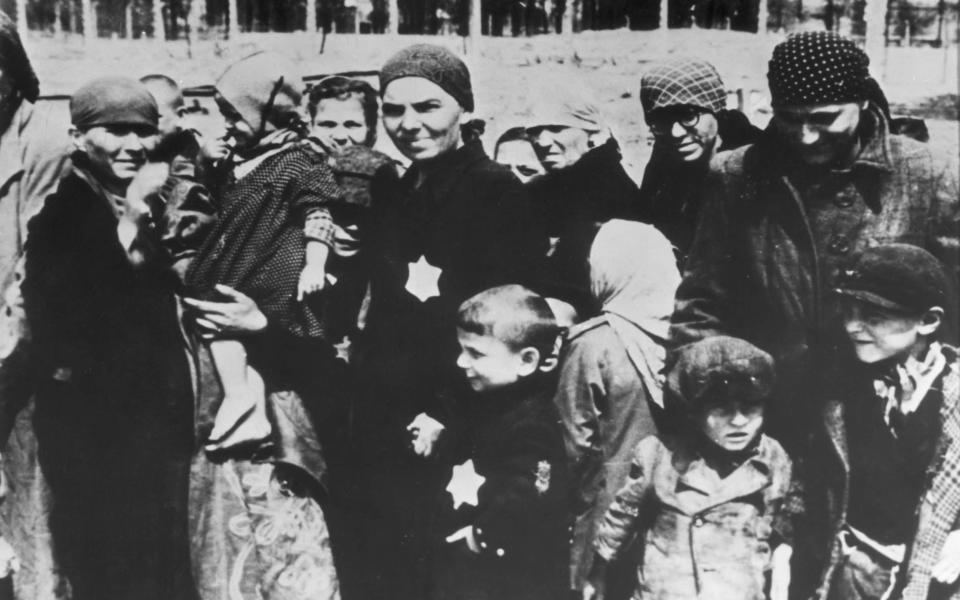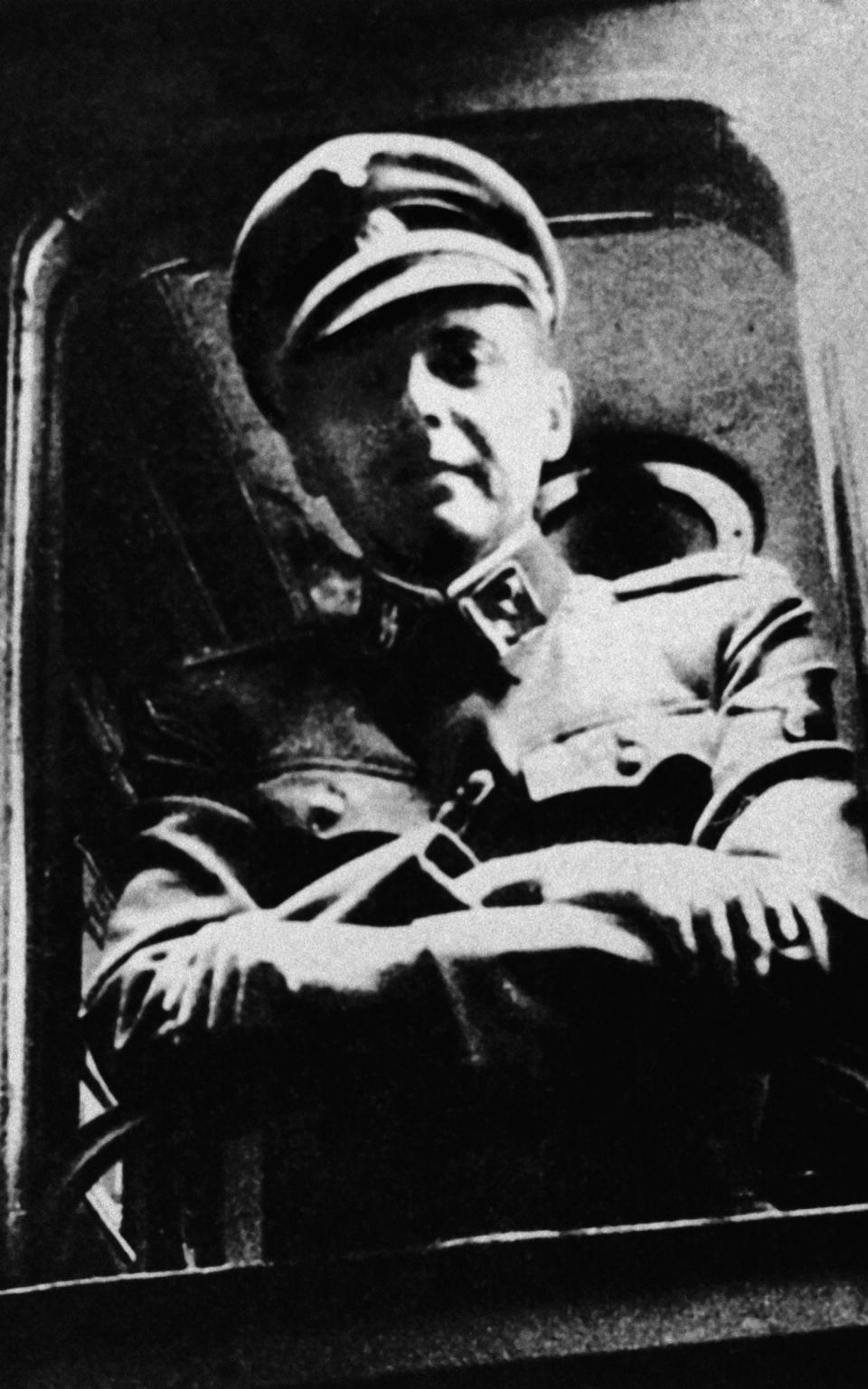Girl experimented on by Nazis used Auschwitz tattoo to track down long-lost mother

- Oops!Something went wrong.Please try again later.
A remarkable story of suffering, loss and reunion has emerged after an encounter between Pope Francis and a former Nazi concentration camp detainee who was experimented on by the notorious Dr Josef Mengele as a child.
The Pope kissed the number – 70072 – that remains tattooed on the arm of 80-year-old Lidia Masksymowicz when he met her during his weekly general audience at the Vatican on Wednesday.
“That kiss gave me strength. It helped reconcile myself with the world. Pope Francis is important in my life. For me, this was a great day,” she told La Repubblica newspaper.
The Pope listened closely as her story was recounted by a Polish priest who accompanied Mrs Masksymowicz.
That tattoo helped her find her mother years after the end of the war, an odyssey that is told in a new documentary, 70072 - The Girl Who Couldn’t Hate, the True Story of Lidia Masksymowicz.
She was only two years old in December 1943 when she was plucked from her life in what is now Belarus and sent to the Auschwitz concentration camp.

She was separated from her mother and lived with other children in a neglected wooden barracks.
“There was a terrible smell, there was no water with which to wash. It was always dark and the roof let in water. When it rained and snowed, it all came inside the hut. There was a female guard who maintained order with a whip,” she said in an interview with the Italian newspaper.
“In the morning they gave us a slice of black bread, at lunchtime some soup. Every one of us had to fight to survive.”
The children were used for medical experiments by Mengele, one of Germany’s most notorious war criminals. An ardent Nazi who was known as the Angel of Death, he conducted sadistic experiments on prisoners at Auschwitz which often led to their deaths.
After the war, he escaped to South America and is believed to have died of a stroke while swimming in Brazil in 1979.

“I don’t remember exactly what Mengele did to me but I remember the pain, and his cold gaze and his highly polished boots. He was an atrocious person, without limits or scruples. After the war, books were found with references to tattooed numbers and mine was one of them,” she said.
The camp was liberated by Soviet soldiers in January 1945. Mrs Masksymowicz had survived 18 months of hell but it was thought her mother had died.
She was adopted by a family in Poland and raised as a Catholic. But as she grew up, she became determined to find out what happened to her mother.
She sent all her details – including the number tattooed on her arm – to a research agency in Hamburg.
After three years, an answer came back – her mother was alive and living in the Soviet Union.
“I thought she was dead, but that was not right,” said Mrs Masksymowicz, who was 21 when she found out. “They told me that she too had been looking for me all those years.”
Mrs Masksymowicz traveled to Moscow by train to be reunited with her mother. “She told me that she had looked for me everywhere. She was happy but at the same time deeply sad for all the time she had spent without me.”
Not long afterwards, in the early 1960s, her mother died.
Mrs Masksymowicz, who now lives in Krakow in Poland, said she had tried not to hold on to negative feelings towards the Nazi guards and officers who had treated her and so many others with such barbarity.
“I don’t know how to hate. I know that had I hated, I would have suffered even more.”

